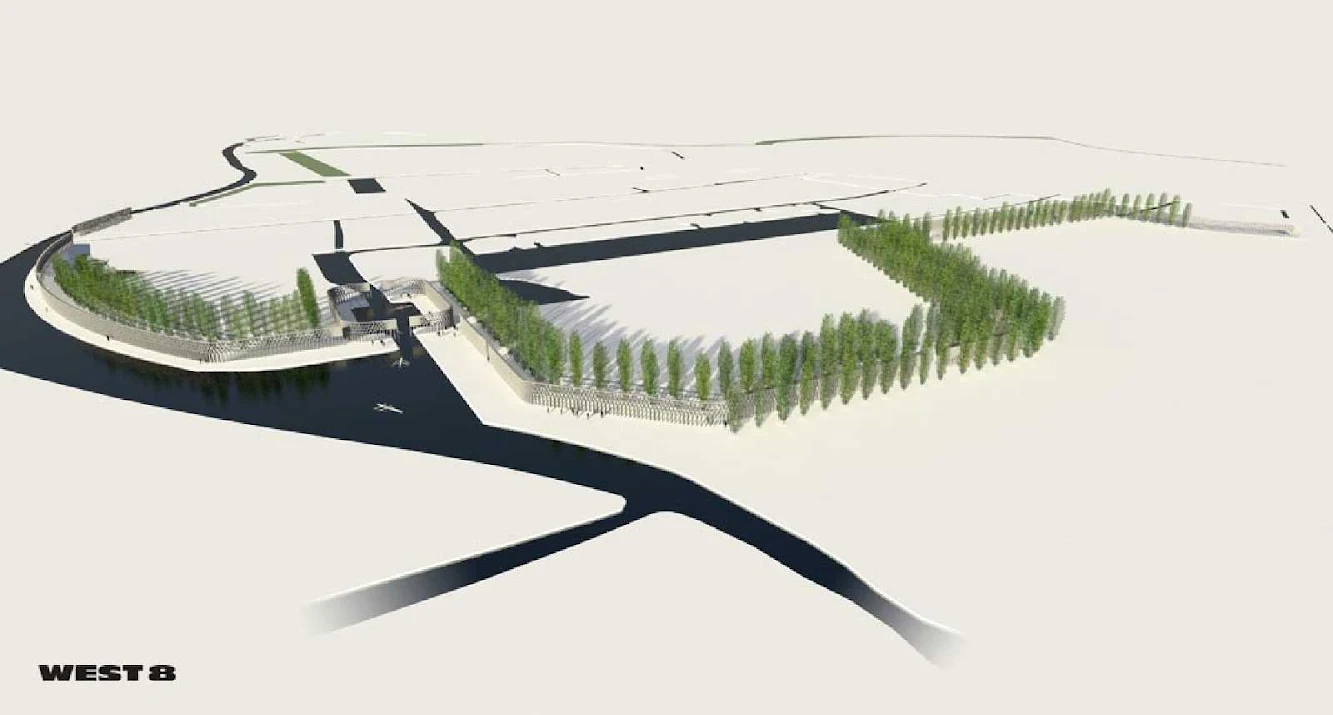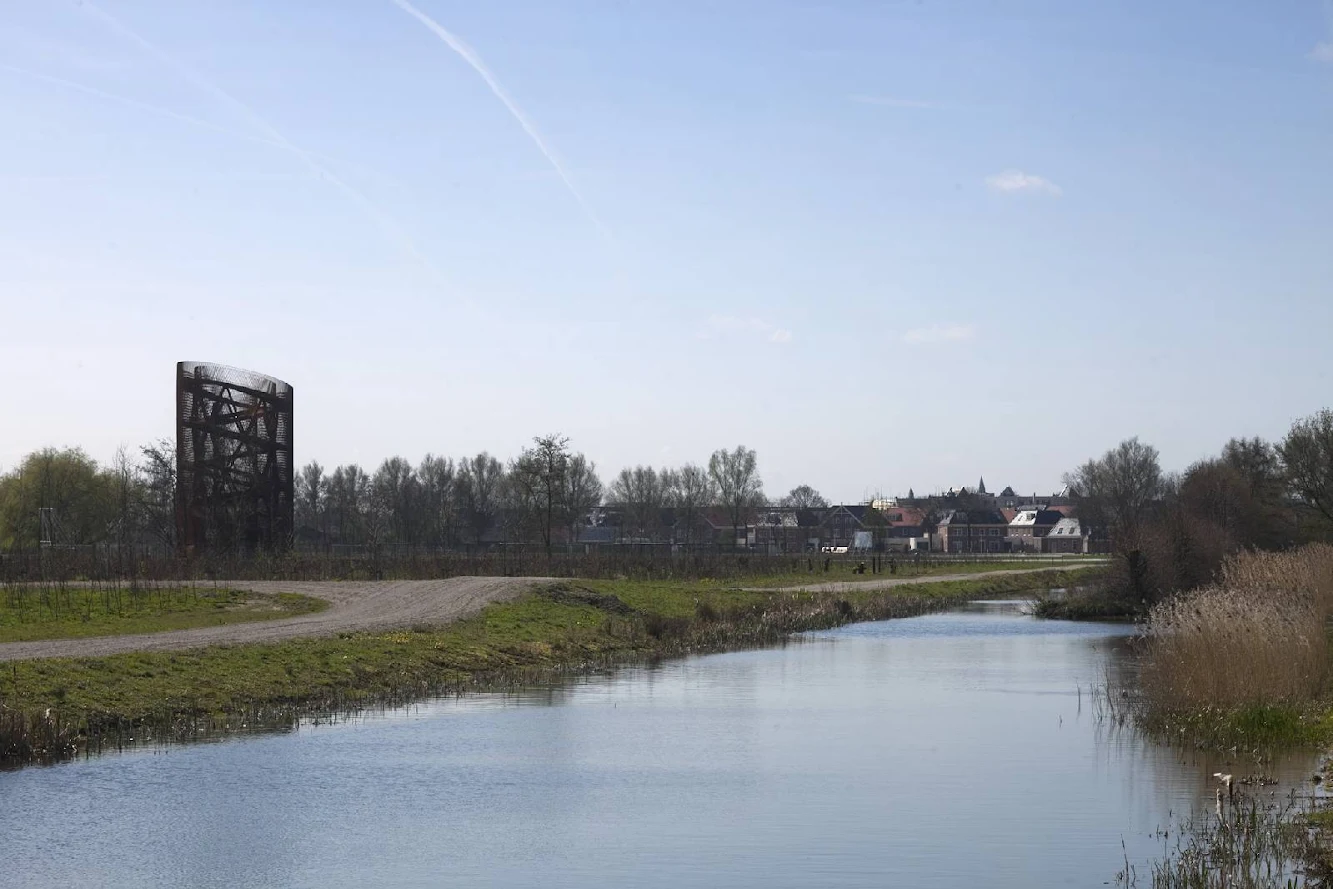
The concept for the park, to be constructed in a new residential district of 35.000 homes to the west of Utrecht, is based on creating three ‘edges’ that shield the park from its suburban surroundings.

The edges consist of a re-excavated meander of the River Rhine, a nine-kilometer long ecological zone and a four kilometer long pergola around the core of the park.

The core is a 50-hectare green courtyard, called ‘Binnenhof’. It contains woods, water courses, pedestrian areas, playground and formal avenues which create a secluded green inner world that can be entered only through gateways.

The surrounding six meter high pergola is a fauna wall, which will attract all kinds of animals and plants, thus creating its own miniature ecosystem.

There is a cemetery also, that lies on higher grounds surrounded by water and the pergola.

Surrounding the core are sports fields, allotment gardens and other facilities which are linked by a linear park of flowery meadows, ‘The Jac P. Thijsse Ribbon’.

Hikers, cyclists and skaters can move through this circuit park over a track that offers them constantly changing perspectives.

The park is essential to counterbalance the inescapable sea of houses and puts its mono-functional character into perspective.

Above all the park will offer a factor of growth. With its consciously chosen long-term lifecycle it will grow beyond the eternal youth of the suburban environment.

The design for Máximapark (formerly known as Leidsche Rijn Park) was the outcome of a design competition held in 1997.






Location: Utrecht, Holland Landscape Architects: West8 Project Team: Adriaan Geuze, Edzo Bindels, Robert Schütte, Ard Middeldorp, Cyrus Clark, Edwin van der Hoeven, Esther Kruit, Freek Boerwinkel, Fritz Coetzee, Gaspard Estourgie, Jacco Stuy, Jeroen de Willigen, Joost Koningen, Joost Emmerik, Joris Hekkenberg, Kees Schoot, Maarten Buijs, Martin Biewenga, Nigel Sampey, Perry Maas, Pieter Hoen, Ronald van Nugteren Competition: 1997 Year: 2013